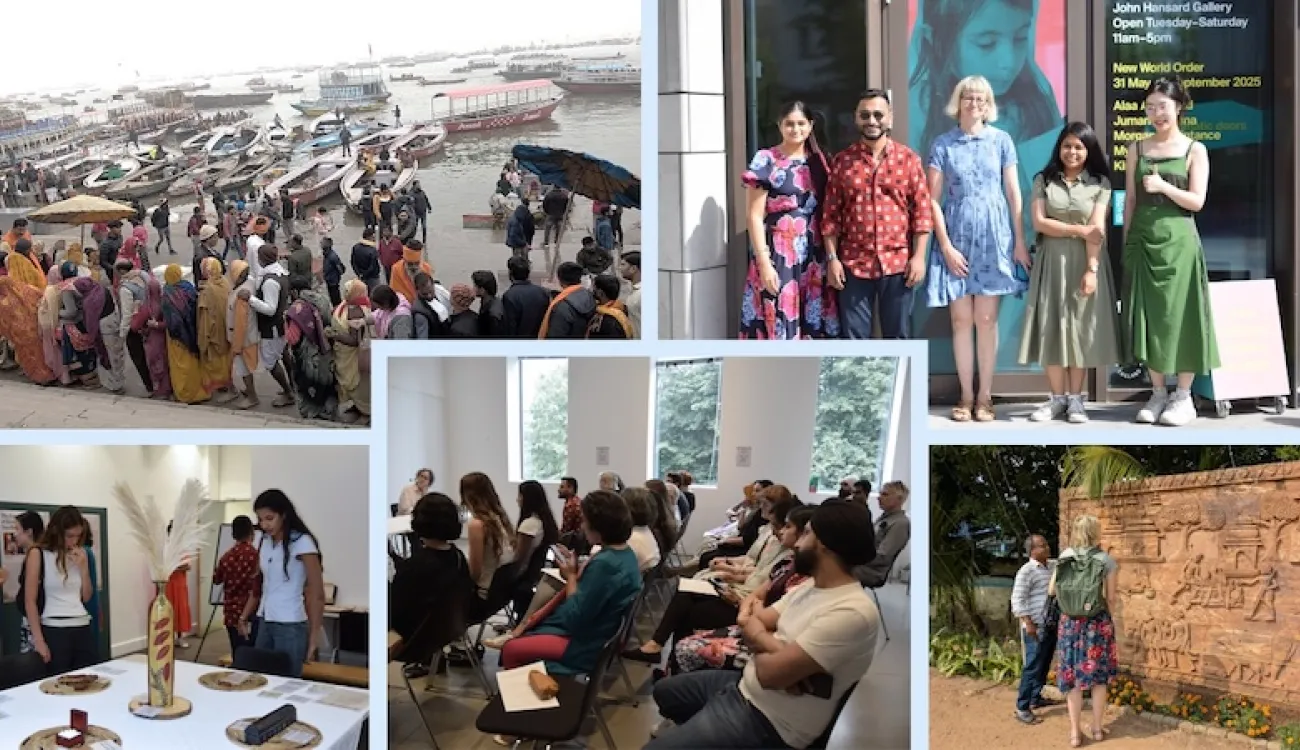Sacred Heritage Revival Through Diaspora Engagement and Urban Redevelopment
Project: Reframing sacred urbanism: India-UK diasporic worlding and nationalist heritage revival
Lead Researcher: Dr. Rishika Mukhopadhyay and Dr. Jen Dickinson, School of Geography and Environmental Sciences, Faculty of Environment and Life Sciences
Collaborators: Dr. Saeed Ahmad, Jindal School of Design and Architecture, O P Jindal Global University, Haryana and Dr Jaskiran Bhogal, Faculty of Asian and Middle Eastern Studies, University of Oxford
Funding: British Academy
Background
Across the world, sacred sites have long been at the heart of cultural identity, spiritual practice, and, at times, political contestation. From Jerusalem to Ayodhya and Hagia Sophia, these spaces often carry layered meanings and competing claims. They are places where history, memory, and belief converge and sometimes collide. The research explores how these dynamics are shaping Indian cities- historically and in contemporary times. Furthermore, we investigate how the Indian diaspora in the UK, the country's largest ethnic minority, is actively preserving and reimagining sacred heritage: funding temples, shaping traditions, and sustaining heritage transnationally.
Previous studies treat the imprints of religious nationalism on cities and the transnational practices of diaspora communities as distinct topics. The goal of this project is to analyse how the historic past mediated by contemporary religious urban politics in the present casts itself on the practices of the dual diasporic self.
Combining interdisciplinary expertise across urban history, cultural and development geography, the project brings these two debates together through three angles:
- the historical spatial claims, conflicts and negotiations around religious heritage in pilgrim cities
- the mobilisation of sacred narratives in the contemporary redevelopment of pilgrim cities
- the connections between the UK Indian diaspora’s faith-based practices in the UK and their material contributions to local sacred sites in India.

Objectives
Reframing sacred urbanism project has three interrelated objectives:
- To investigate the historical spatial claims, conflicts and negotiations around religious heritage in pilgrim cities
- To examine contemporary processes, motivations and consequences of sacred heritage-led redevelopment of pilgrim cities
- To uncover the connections between the UK Indian diaspora’s faith-based practices in the UK and their material contributions to local sacred sites in India.
Key findings
- Indian diaspora in the UK expresses sacred heritage through festivals, architecture, community service, and generational transmission. In doing so, they reveal a dynamic, transnational exchange of memories, labour, politics, resources, and influence—reshaping sacred geographies and identities across both nations. This 'everyday sacred' expression both in material and immaterial form is a key finding.
- A series of Indian pilgrimage cities is going through urban redevelopment. Investigated policies involve the provision of amenities and infrastructure as well as demolition and reconstruction.
- The issue of density, authenticity, cosmic geography and development are emerging as key issues.
Project outputs
Publications
Journal articles under progress
The everyday sacred- spiritual sites and urban redevelopment, University of Southampton Research Magazine: Re:Action Special Edition on India.
Seminar/ Conferences
Two paper presentations: At Centre for Transnational Studies, Southampton; and the Annual Conference of the Royal Geographical Society, Birmingham, UK. Session convened on Nationalist Urbanism
Impact
Public exhibition
Sacred Connections: Heritage Revival by Indian-Origin Communities in the UK, 21-27 June 2025 at John Hansard Gallery, Southampton
This immersive exhibition explored how Indian-origin communities in the UK keep their sacred heritage alive across borders, through everyday spiritual practices and the restoration of important sacred sites in India and the UK. Visitors experienced a multisensory environment where sound, scent, touch, photographs, and meaningful objects bring this living heritage to life.
The exhibition demonstrated how local customs connect with global conservation ethos, and how people maintain their spiritual roots even while living far from their homeland. Through community efforts and international diplomacy work, the exhibition highlighted the important role that people of Indian origin play in keeping sacred traditions and places alive.
Through photographs and sacred objects, sounds and smells—some directly from temples, homes and communities—the exhibition reflected on the meaning of sacred heritage in contemporary life. Three guest speakers shared their views on how Indian-origin communities help protect heritage, both in their neighbourhoods and around the world.
Future work
The project is currently in progress, with data collection activities ongoing.